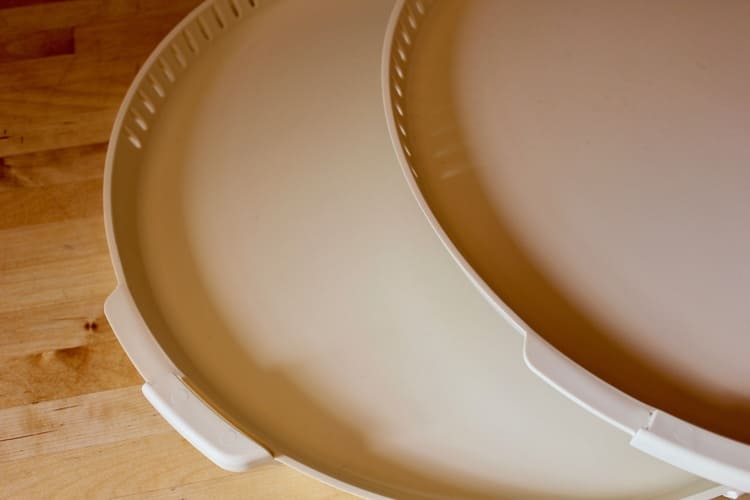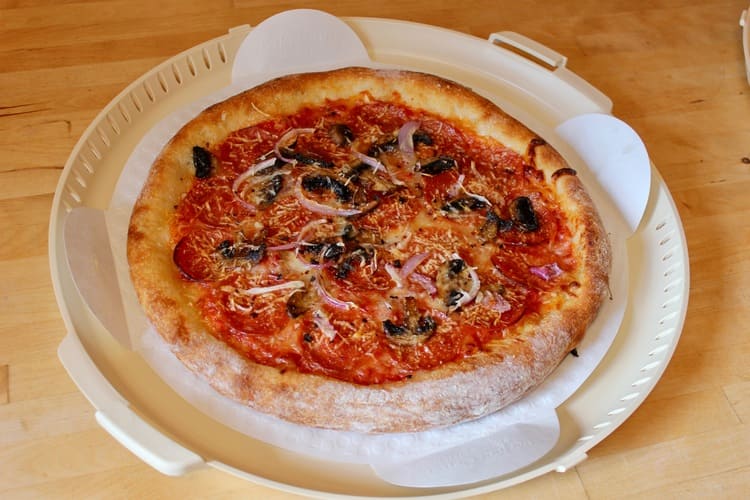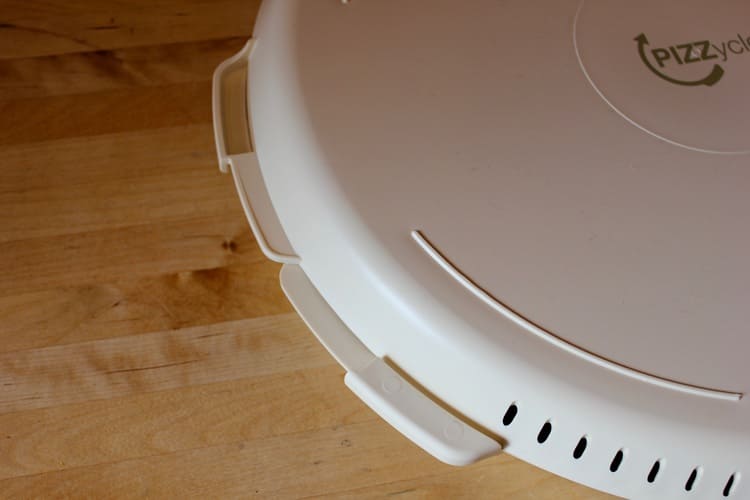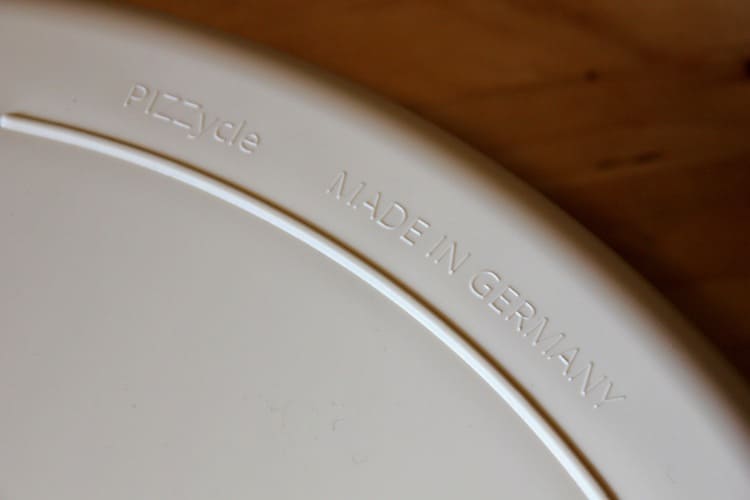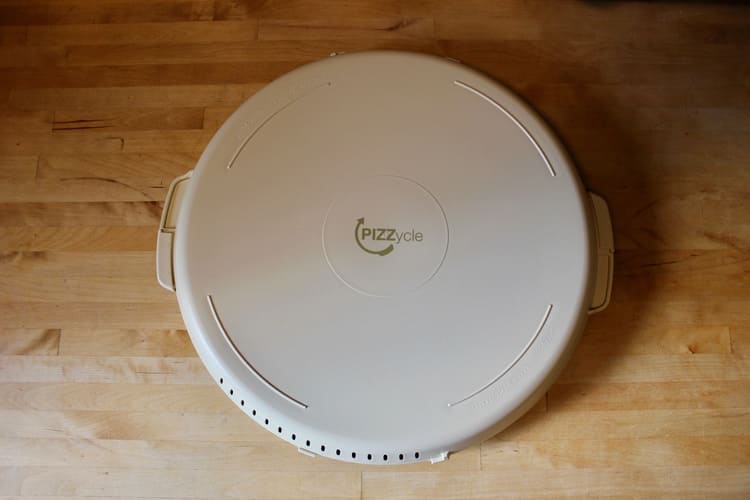
Is the world ready for a reusable pizza box? The inventors of PIZZycle certainly think so. Marlene Bruch and Luise Hornbach created this unique packaging as a university project and are currently pursuing full-scale production for the benefit of pizzerias, pizza lovers, and humanity. Their design is slick, smart, and user friendly. Whether the pizza industry will buy into the concept is another story.
The Problem
Since the dawn of time (or at least the past 65 years) pizza boxes have been pretty much the same. We started with thin, paperboard boxes potentially all the way back to the 1930s. The next big step didn’t happen until Dominos popularized the use of corrugated pizza boxes in the 1970s. The image of a paper pizza box has become essential to the personality of pizza.
Supply chain issues and paper shortages are only the most recent in a long history of issues concerning paper use. While companies like Pratt and Westrock use recycled paper to create their products, the process and amount of energy required to do so are substantial. It doesn’t help that communication about the recyclability of pizza boxes is extremely murky. A recent study by the biggest pizza box manufacturers show that corrugated pizza boxes are absolutely recyclable even if they contain traces of contaminants. Even so, a huge number of soiled pizza boxes end up in the trash which means they end up in landfills. That’s the problem.
Innovations
The PIZZycle isn’t the world’s first reusable pizza box. I have at least four other attempts in my pizza box collection but none have yet to take off. This unit is cleaner and more well designed than anything else I’ve seen. It’s made of two identical pieces that fit together to form a single package. No need to worry about mismatching two tops or two bottoms — there’s no difference between the two with this product. A simple slide-lock secures the two sections and cleverly spaced tabs on the side make it easy to release the lock. There are no moving parts.
Standard paper pizza boxes absorb some of the moisture from a fresh pizza but since the PIZZycle is made of plastic, that moisture can get trapped. Nobody wants a soggy pizza, so Bruch and Hornbach designed their unit with side ventilation. They went through several versions and ended up with this amount and orientation of vents to allow for moisture release without a significant temperature drop. While they have yet to run lab tests, anecdotal evidence suggests that temperature loss in a PIZZycle is the same as that in a paper pizza box.
Pizzerias use their pizza boxes as roving billboards. The PIZZycle doesn’t have a ton of customizable space, but there is a 10cm circle in the center that pizzerias can customize. It doesn’t seem like they’ll be able to fit more than a logo and maybe some sparse contact info. I’d love to see a larger customizable space in future versions.
Reusable Packaging Infrastructure
The main problem is whether pizzerias and pizza customers will adapt to a reusable pizza box. It would require customers to save their packaging for return to the pizzeria the next time they’re in the neighborhood. Or maybe they’ll exchange the used package for a pizza fresh one the next time they place an order. But what if I order 15 pizzas for a party? Am I left with 15 PIZZycles sitting in my tiny apartment? The real issue here is going to be the infrastructure for collecting and redistributing reusable packaging.
If more packing becomes reusable, there will be a greater need to build in a system for this in the way that we have garbage collection and recycling pickup. But we’re not even dealing with compost very well, so my expectation for some sort of greater reusable container collection agency is low. In the meantime, companies like PIZZycle will have to figure out micro solutions. A great example is how food pods handle things in Portland, OR. Micro restaurants sign up to work with companies like Go Box to manage their containers. Customers can discard packaging in marked bins so Go Box can collect, sanitize, and return them to participating restaurants. It works if enough pods in close proximity sign up.
Pricing
The second problem is that a pizza box costs $0.25 – $0.50 and the PIZZycle costs $6.50 in its current form. I’ve seen great pizza box innovations over the years that didn’t make it because they cost pennies or even fractions of a penny more than standard boxes. Pizzerias don’t usually up-charge you for a box, they absorb it as a cost of doing delivery. You can’t really do that with a $6.50 box. But the whole point here is that the package is reusable, so they could potentially cost LESS than paper boxes if the reusability aspect gets figured out. But that requires infrastructure and public buy-in. You’d probably need dozens of pizzerias to join up before it really works out. I think one of the newish fast casual chains will have to pick up the product in a single strong market to test it out.
The Future of Pizza Boxes
The dream of a more environmentally friendly pizza box is clearly alive in the hearts and minds of innovators, but its execution is still in question. Of all the attempts I’ve seen, this is the tightest design. I can only hope the PIZZycle folks can figure out a system in which using it will become simpler for both the pizzerias and end consumer. Beyond this reusable container, I’ve seen some promising compostable products that might be even easier to implement. We’ll just have to standby and wait to see if any of them hit.


